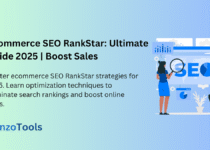Digital Marketing 2025: Trends, Technologies, and the New Era of Consumer Engagement
As we step into the midpoint of the decade, digital marketing in 2025 is a dynamic ecosystem shaped by AI, privacy shifts, and a demand for hyper-personalized, immersive experiences. Marketers are no longer just content creators or ad buyers — they’re data strategists, AI conductors, and community architects. Here’s a deep dive into the defining elements of digital marketing in 2025.
1. AI-Powered Personalization at Scale
Artificial Intelligence is no longer optional — it’s the backbone of modern marketing strategies. In 2025, AI does more than automate emails or recommend products. It generates creative content, conducts predictive analytics, personalizes customer journeys in real time, and even manages dynamic ad spend.
With tools like OpenAI’s GPT models and other generative platforms, marketers can deliver personalized ads, emails, and social media content tailored to individual behaviors, preferences, and moods — all without human intervention.
2. The Rise of Voice and Conversational Commerce
Voice search, smart assistants, and AI chatbots are redefining how consumers interact with brands. In 2025, more than 50% of online searches are conducted via voice, and conversational commerce (transactions through chat interfaces) is mainstream.
Marketers are optimizing content not just for keywords, but for natural language. Brands are investing in “voice SEO,” branded voice experiences, and AI agents that provide human-like customer service and product recommendations.
3. Privacy-First Marketing in a Cookieless World
With the phasing out of third-party cookies and increasing global privacy regulations (like GDPR, CCPA, and newer equivalents in Asia and Africa), marketers in 2025 are pivoting toward zero-party and first-party data strategies.
Brands now build direct relationships through loyalty programs, gated content, surveys, and value-based exchanges. Transparency, ethical data use, and consent-driven personalization have become competitive advantages.
4. Immersive Experiences: AR, VR, and the Metaverse Shift
Immersive technologies are no longer experimental. AR filters, virtual stores, and 3D product trials have become integral to product discovery and engagement. Leading brands are leveraging metaverse platforms and spatial computing tools to host branded virtual events, offer gamified experiences, and create interactive ad campaigns.
In 2025, successful marketers understand that digital marketing isn’t limited to screens — it extends to virtual worlds and hybrid realities.
5. Micro-Influencers and Community-Led Growth
The influencer landscape has matured. Instead of mega-influencers with mass reach, brands are partnering with micro-influencers and nano-creators with niche, highly engaged followings. Authenticity and relatability trump follower counts.
Moreover, community-led growth — using passionate customers as advocates and creators — has become a sustainable, high-ROI strategy. UGC (User-Generated Content) is being elevated by AI tools that amplify reach and integrate it across channels.
6. Real-Time, Omnichannel Engagement
Consumers now expect a seamless experience across platforms — from TikTok to email to voice assistants. In 2025, omnichannel strategies are not just about presence but synchronization.
Real-time data integration across touchpoints (thanks to CDPs and AI analytics) allows for consistent messaging, instant retargeting, and cohesive storytelling. Marketers are building “digital twins” of customer journeys to optimize touchpoints with precision.
Conclusion: Agility is the New Currency
In a landscape where technologies evolve rapidly and consumer expectations shift overnight, agility is the most important trait for marketers. Digital marketing in 2025 isn’t about choosing the right channel — it’s about orchestrating meaningful experiences through data, empathy, and innovation.
Businesses that thrive are those that see marketing not just as a function but as a strategic driver of growth, trust, and long-term value.

